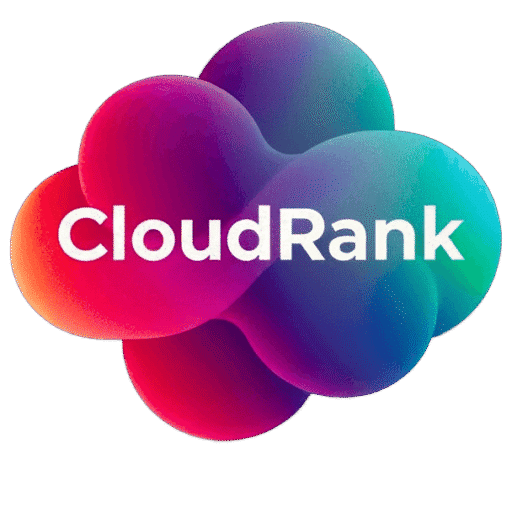by Daniel Páscoa (https://unsplash.com/@dpascoa)
Platform as a Service, commonly abbreviated as PaaS, is a cloud computing model that provides customers with a full-fledged development and deployment environment in the cloud. It abstracts the underlying infrastructure, allowing developers to concentrate on writing and deploying code without the burdensome task of managing servers, storage, and networking.
Key Characteristics of PaaS
- Development Framework: PaaS provides a robust development framework that greatly simplifies the application creation process. This framework includes a wide array of built-in software components such as middleware, database management systems, and web servers, which streamline the development workflow. By utilising these pre-configured components, developers can significantly reduce the time and effort required to build applications.
This is particularly beneficial for start-ups and small businesses that may not have extensive resources to develop these components from the ground up. 2. Integrated Development Environment (IDE): PaaS platforms often come equipped with a sophisticated web-based Integrated Development Environment (IDE), providing developers with a seamless coding experience. These IDEs support a variety of programming languages and offer features such as code completion, syntax highlighting, and debugging tools. This environment facilitates the efficient development, testing, and deployment of applications, all within a unified interface. By having access to a comprehensive suite of development tools, teams can collaborate more effectively, even if they are dispersed across different geographical locations. 3. Scalability: Automatic scalability is a hallmark of PaaS, enabling applications to handle increasing loads without manual intervention.
This is crucial for businesses that experience variable demand, as it ensures that resources are efficiently allocated based on current needs. With PaaS, organisations can scale their applications up or down effortlessly, responding swiftly to market demands. This elasticity not only enhances performance but also optimises cost management, as organisations only pay for the resources they actually use. 4. Middleware: By offering middleware, PaaS facilitates communication between different applications, enhancing interoperability and integration. Middleware serves as a bridge that allows disparate systems to exchange data and functions seamlessly. This capability is vital for enterprises that rely on a multitude of applications to operate efficiently, as it ensures that all systems work harmoniously. Moreover, middleware can aid in automating complex business processes, further streamlining operations and reducing the potential for errors. 5.
Database Management:PaaS usually encompasses a variety of database options, providing developers with choices that best suit their application needs. Whether an application requires a relational database, a NoSQL database, or in-memory data storage, PaaS platforms offer flexible solutions to meet these demands. This variety allows developers to choose the most appropriate database technology for their specific use case, optimising both performance and cost. Additionally, PaaS providers often handle database maintenance tasks such as backups and updates, allowing developers to focus on application logic and development.
Benefits of Using PaaS
The utility of PaaS extends beyond mere convenience, offering significant advantages that can transform the development lifecycle.
Enhanced Productivity
By alleviating the need to manage underlying infrastructure, PaaS significantly boosts developer productivity.
Developers can rapidly prototype, test, and deploy applications, speeding up time-to-market. This swift development cycle is crucial in today’s competitive environment, where the ability to promptly deliver new features can be a decisive factor for business success. Moreover, by removing the complexities of infrastructure management, developers can dedicate more time to innovation and enhancing application functionality.
Cost Efficiency
by Sajad Nori (https://unsplash.com/@sajadnori)
PaaS follows a pay-as-you-go model, ensuring that organisations only pay for the resources they consume. This financial model not only reduces initial capital expenditure but also aligns operational costs with actual usage, optimising budget allocation. By avoiding over-provisioning and underutilisation of resources, organisations can achieve a higher return on investment.
Additionally, the reduction in infrastructure management responsibilities can lead to lower operational costs and allow companies to allocate resources more strategically.
Focus on Core Competencies
With the operational aspects of infrastructure management abstracted away, organisations can concentrate on their core competencies—developing innovative applications that cater to their business needs without being sidetracked by technical complexities. This focus allows companies to strengthen their market position by delivering unique value propositions to their customers. By leveraging PaaS, businesses can invest more in research and development, leading to the creation of cutting-edge solutions that drive growth and differentiation.
Seamless Collaboration
PaaS platforms facilitate collaboration among geographically dispersed teams by providing a centralised development environment.
Team members can access the same tools and resources, fostering efficient communication and collaboration. This is particularly advantageous in an era where remote work is increasingly common, as it ensures that teams remain productive and cohesive regardless of their physical location. By enabling real-time collaboration, PaaS helps organisations to maintain a consistent workflow, reduce misunderstandings, and accelerate project timelines.
PaaS Examples and Use Cases
To fully comprehend PaaS, it is essential to examine its real-world applications and how various organisations leverage this cloud service to their advantage.
Google App Engine
Google App Engine is a prominent example of PaaS that allows developers to build scalable web applications and mobile backends.
It supports popular programming languages such as Java, Python, and Go, and offers a fully managed environment where developers can deploy applications without worrying about the underlying infrastructure. With features like automatic scaling and integrated development tools, Google App Engine enables businesses to focus on innovation and application quality while Google handles the operational aspects. This makes it particularly appealing for start-ups and enterprises looking to optimise development efficiency and resource allocation.
Heroku
Heroku is another exemplary PaaS provider that caters primarily to developers by offering a platform to deploy, manage, and scale applications effortlessly. Its support for numerous programming languages and add-ons for databases, caching, and monitoring make it a versatile choice for developers aiming for rapid deployment and scalability.
By providing a rich ecosystem of third-party services and extensions, Heroku empowers developers to customise their application stack to meet specific business needs. This flexibility is invaluable for companies that require adaptable solutions to keep pace with evolving market demands.
Microsoft Azure App Services
Microsoft Azure App Services provides a comprehensive PaaS offering with capabilities to build and host web apps, mobile app backends, and RESTful APIs. With seamless integration with other Azure services, it is an ideal platform for enterprises looking to leverage cloud-based solutions. Azure App Services allows organisations to develop applications using a wide range of languages and frameworks, supporting diverse business requirements. The platform’s enterprise-grade security, compliance certifications, and extensive global reach make it a compelling choice for businesses seeking robust and scalable cloud solutions.
Salesforce Platform
The Salesforce Platform is a specialised PaaS solution focusing on customer relationship management (CRM). By providing tools to automate business processes and integrate with third-party applications, it empowers organisations to enhance customer engagement and operational efficiency. Salesforce’s extensive suite of development tools and pre-built applications allows companies to customise their CRM strategy and improve customer interactions. This specialisation in CRM makes Salesforce a go-to platform for businesses aiming to optimise their customer service operations and drive sales growth.
The Role of PaaS in Modern Development
by Arteum.ro (https://unsplash.com/@arteum)
In the contemporary digital landscape, PaaS plays a vital role in the development and deployment of applications.
Its ability to streamline workflows, enhance scalability, and reduce costs makes it an indispensable tool for businesses striving to innovate and stay competitive.
Facilitating Innovation
PaaS empowers developers to experiment with new technologies and frameworks without the constraints of managing infrastructure. This fosters an environment of innovation, enabling organisations to develop cutting-edge applications that respond to market demands swiftly. By providing access to the latest tools and technologies, PaaS platforms encourage creativity and innovation, allowing businesses to remain at the forefront of their industries. This capability to innovate rapidly is a key differentiator in today’s fast-paced market environment.
Bridging the Gap Between Development and Operations
By offering a consistent and automated environment, PaaS bridges the gap between development and operations, a concept often referred to as DevOps.
This integration enhances collaboration, reduces deployment time, and improves application reliability. By harmonising the efforts of development and operations teams, PaaS helps organisations to implement DevOps practices more effectively, leading to quicker release cycles and higher-quality software. This synergy between development and operations is crucial for maintaining a competitive edge in the digital economy.
Enhancing Agility
PaaS enables organisations to be more agile by allowing them to quickly adapt to changing market conditions and customer needs. With PaaS, businesses can rapidly deploy new features and updates, ensuring that their applications remain relevant and competitive. This agility is essential for businesses looking to capitalise on emerging trends and opportunities, as it allows them to respond promptly to shifts in consumer preferences and technological advancements.
By fostering agility, PaaS assists organisations to thrive in an ever-changing digital landscape.
Challenges and Considerations
Whilst PaaS offers numerous benefits, it is not free of challenges. Organisations must consider the potential drawbacks and make informed decisions when selecting a PaaS provider.
Vendor Lock-In
One of the primary concerns with PaaS is vendor lock-in, where migrating applications and data to another provider can be complex and costly. Organisations should assess the portability options provided by PaaS providers to lessen this risk. This involves evaluating the availability of standardised APIs, open-source compatibility, and the ease of data export. By prioritising portability, businesses can safeguard their investments and maintain flexibility in their cloud strategy.
Security Concerns
Security is an utmost consideration in cloud computing.
Organisations must ensure that the PaaS provider adheres to robust security standards and provides adequate measures to protect sensitive data. This includes evaluating the provider’s compliance with industry regulations, such as GDPR and HIPAA, and their implementation of encryption, authentication, and access control mechanisms. By rigorously assessing security practices, organisations can minimise the risk of data breaches and safeguard their intellectual property.
Customisation Limitations
While PaaS offers pre-configured environments, it may not provide the level of customisation required for certain applications. Organisations with specialised needs must assess whether PaaS can accommodate their requirements. This involves examining the extent of configuration options, the availability of custom integrations, and the support for proprietary technologies.
By thoroughly evaluating these factors, businesses can determine whether PaaS aligns with their unique operational demands and strategic objectives.
Conclusion
Platform as a Service (PaaS) represents a pivotal advancement in cloud computing, offering a robust and efficient means of developing and deploying applications. By abstracting the complexities of infrastructure management, PaaS enables organisations to focus on innovation, collaboration, and cost-effective solutions. As businesses continue to embrace digital transformation, understanding and leveraging PaaS will be essential in maintaining a competitive edge. Through careful consideration of its benefits and challenges, organisations can harness the power of PaaS to drive growth, enhance agility, and deliver exceptional value to their customers.









